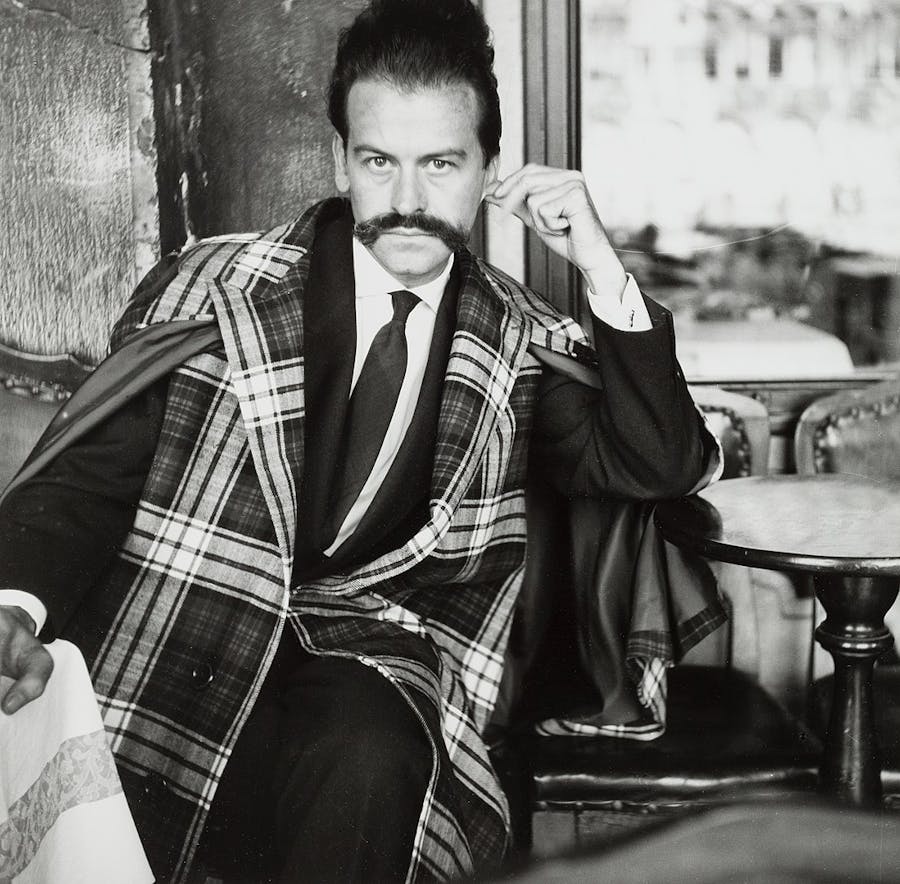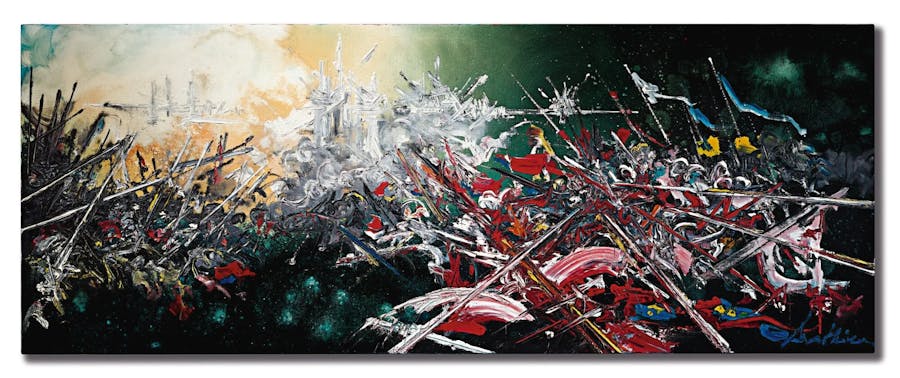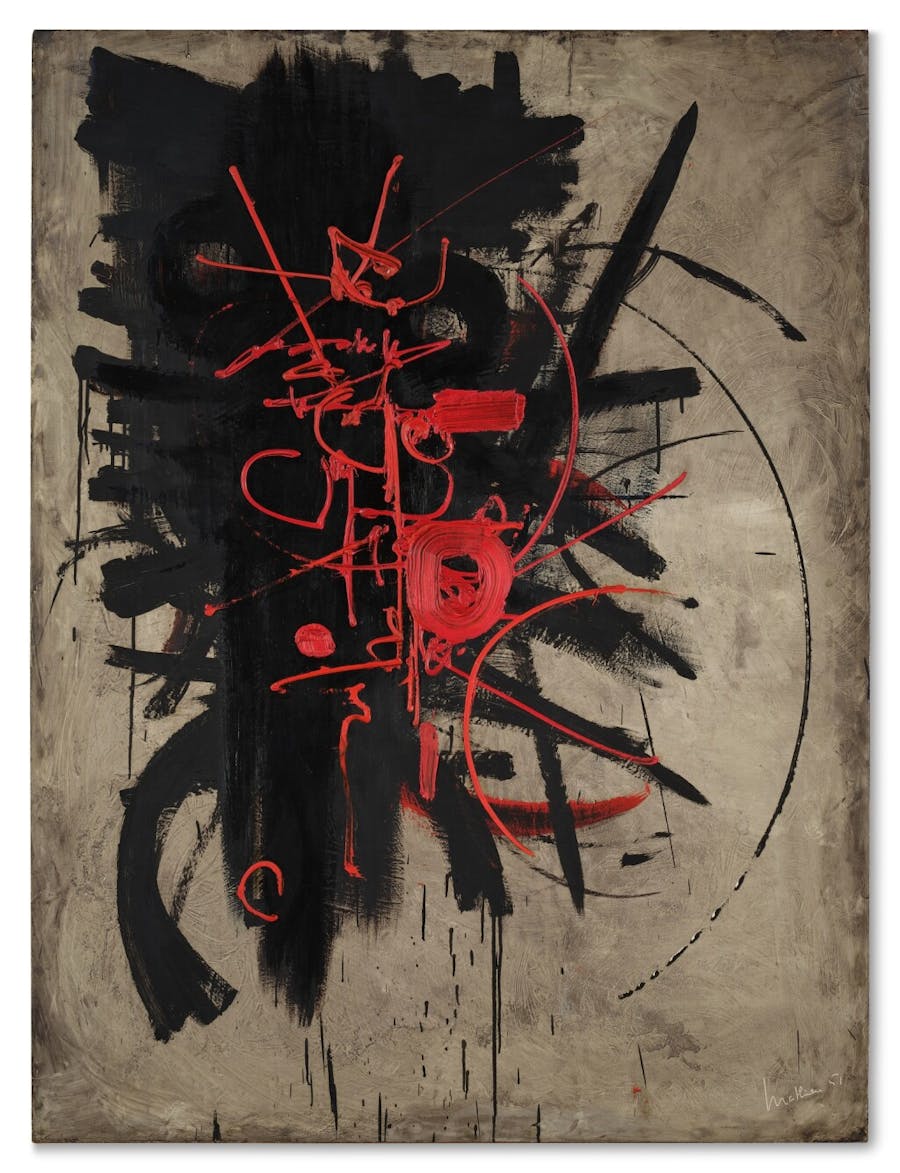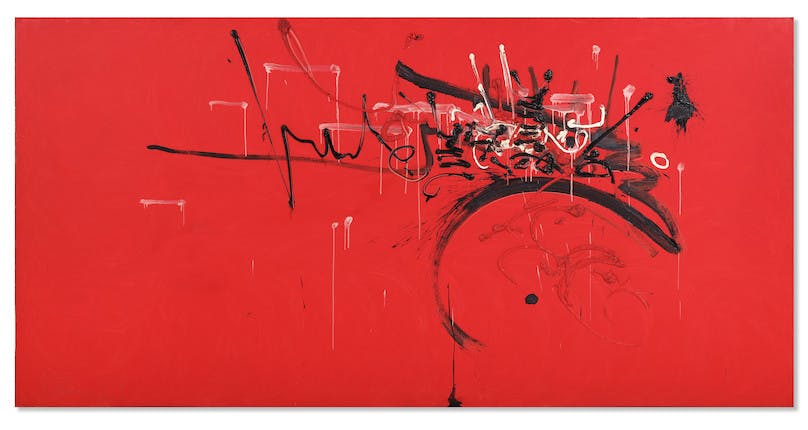Georges Mathieu: Father of Lyrical Abstraction
Georges Mathieu interpreted the celebration and confusion of the post-war period by pioneering the art movement Lyrical Abstraction, creating fast-paced abstracted canvases of splattered paint.
French artist Georges Mathieu (1921-2012), known for his dramatic abstract canvases, turned to an artistic career in 1942 after studying law and teaching English. His first foray into art was painting naturalistic landscapes, but he soon began to experiment with avant-garde techniques such as dripping and tubism (squeezing paint from the tube directly onto the canvas).

He quickly established himself as the founder of the lyrical abstraction movement, which began in post-World War II Europe and emphasized abstracted shape, sharp brush strokes and the bold use of contrasting colors. In his paintings, the lines seem to scrawl across his canvases with raw energy and his forms display an unprecedented freedom. The relationship between the hand of Georges Mathieu and the surface of the canvas is almost physical, and the speed of execution is transcribed in its aesthetics. The titles of his paintings often have historical, musical or geographical references, which add a deeper dimension to his dramatic body of work.
Related: Abstract Art: From Genre to Movement

Lyrical abstraction was also known by the term Tachism, and is often considered as the European version of the American Abstract Expressionism. Mathieu composed a few manifestos on what constitutes lyrical abstraction with four main points: there must be speed of execution, no pre-existing shapes, no premeditated moves and the work must be painted in an ecstatic state of mind.
Related: Hans Hofmann: Father of Abstract Expressionism
These tenets translated over to Mathieu's public painting performances, such as one at the Sarah Bernhardt Theater in Paris in 1956 where he painted a large 13 x 39 foot canvas using 800 tubes of paint. "The most important moments are clearly when I paint in public," said Mathieu. "In fact, this process, without me being aware of it, works in a mediumistic way to heighten the concentration of the situation."

However, Georges Mathieu encountered difficulties in sharing his art across the Atlantic because the public performances he tried to stage in New York were rejected in 1958 and New York galleries refused to represent him. However, he gained prominence in Europe, Asia and South America that came to a zenith in 1963 when a major retrospective was dedicated to him at the Museum of Modern Art of the City of Paris, an event that coincided with the publication of his book Beyond Tachism.
Related: Jackson Pollock: Drawing the Unconscious

In 1968, a fire devastated his studio, and dozens of canvases were destroyed (including the famous canvas that was created at the Sarah Bernhardt Theater), so few works of his exist today from before 1968.
Want more articles like this straight to your inbox? Subscribe to our free newsletter!
Mathieu showed great versatility during his career and in addition to his striking paintings, he is also known for painting the gold adornments for Sèvres ceramics, serving as editor-in-chief for the United States Lines Paris Review, and drawing up architectural plans for a factory in 1973 at the request of industrialist Guy Biraud.

The painter's work regularly sell for hundreds of thousands of dollars, and last year he set a record with a 1957 work selling for 1.18 million euros at Bonhams Paris.
Find more articles on Barnebys Magazine
This is an updated version of the article originally published on October 9, 2018


